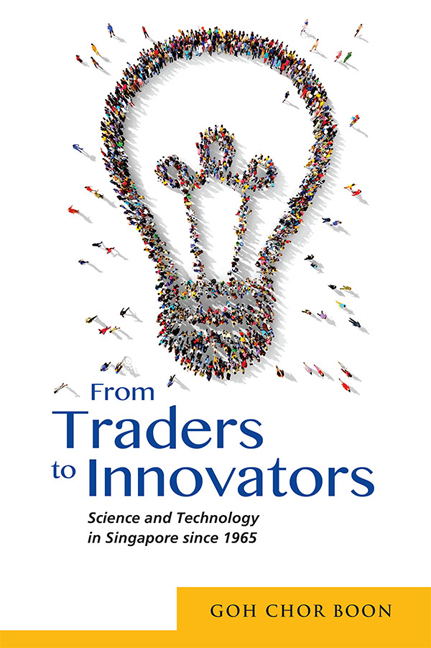Book contents
- Frontmatter
- Contents
- List of Abbreviations
- Introduction
- 1 From Dependency Theory to Creative Innovation
- 2 Surviving and Catching Up in the 1960s and 1970s
- 3 Developing a Technological Growth Trajectory in the 1980s
- 4 State Intervention and Technological Change
- 5 Nurturing a Scientific Culture
- 6 Sociocultural Attributes and R&D
- 7 Towards a Technologically Creative Society
- 8 Conclusion: Power of a Service-Brokerage Culture
- Bibliography
- Index
- About the Author
4 - State Intervention and Technological Change
Published online by Cambridge University Press: 19 May 2017
- Frontmatter
- Contents
- List of Abbreviations
- Introduction
- 1 From Dependency Theory to Creative Innovation
- 2 Surviving and Catching Up in the 1960s and 1970s
- 3 Developing a Technological Growth Trajectory in the 1980s
- 4 State Intervention and Technological Change
- 5 Nurturing a Scientific Culture
- 6 Sociocultural Attributes and R&D
- 7 Towards a Technologically Creative Society
- 8 Conclusion: Power of a Service-Brokerage Culture
- Bibliography
- Index
- About the Author
Summary
As the world economy develops, markets and nations alike have become more global and competitive. Technology has become a dominant competitive force. Unlike the older form of mass production technologies, by the late 1990s the emphasis had shifted to such strategies as productivity, quality, speed in getting new custom or semi-custom products to the market and after-sale technical services. These changes have created tremendous pressures on nations to respond quickly. Equally important, the vastness of these changes have exposed weaknesses and imbalances in the socio-economic structures of nations, such as inadequacies in education systems, poor government–industry–university linkages, the inappropriateness of R&D policies, inefficiencies of the technology infrastructure, and the incompatibility of existing sociocultural orientations towards technological change. These trends and their repercussions not only affect nations like the United States and Japan, they also exert demands on latecomers like Singapore. How has the small, trading city-state fared? This chapter examines the attempts made by the Singapore Government to establish a scientific and technological environment since 1980 and analyses the policies and problems associated with this development. The discussion is seen against the context of changing global scenarios.
INTERNATIONAL AND REGIONAL SCENARIOS IN THE 1980s
Undoubtedly, in terms of per capita GDP growth during the 1980s, East Asian countries were well ahead of the developed countries, with the former achieving a growth rate of 9.3 per cent in 1988 and the latter achieving 3.5 per cent. As the major economic power in Asia, Japan's success also produced what has been called the “flying geese” pattern, with the implication that ASEAN countries (except Singapore) and China are catching up with the East Asian NIEs, or the “little dragons”, in labour-intensive, low-technology industries, while the East Asian NIEs are, in turn, catching up with Japan in high-technology and knowledge-intensive industries. By the early 1990s the East Asian NIEs — South Korea, Taiwan, Hong Kong and Singapore — had graduated as major exporters of more mature consumer products in microelectronics, computers and telecommunications equipment, and this trend created a new dimension to the relationship between East Asian NIEs and the developing countries, particularly those in Southeast Asia.
- Type
- Chapter
- Information
- From Traders to InnovatorsScience and Technology in Singapore since 1965, pp. 86 - 109Publisher: ISEAS–Yusof Ishak InstitutePrint publication year: 2016



